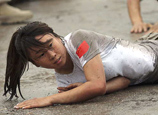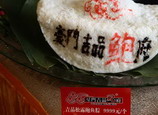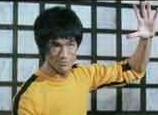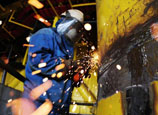
As a holy place for Chinese revolution, Yan’an had recorded the splendid and illustrious chapter to the annals of Chinese development. The wisdom and glorious achievements of those founding fathers of PRC were engraved on this land. From 1935 to 1948, the Central Committee of Communist Party of China and Mao Zedong had led and commanded the Anti-Japanese War and the Liberation War here, which laid the foundation for the founding of the People’s Republic of China which represented a symbol of the heroic phase. Yan’an spirit, the soul of Chinese nation, was formed here. The spirit, shining with great radiance, is carried forward and further developed by generation to generation.
Cultural Hancheng
Hancheng is located in the eastern part of Shaanxi on the west of the Yellow River. Its long and far-reaching history can be dated back to the Paleolithic Age. The ancient sites scattered in and around the town have won Hancheng the titles of “hometown of Sima Qian” and “a city with the most typical Guanzhong historic relics.” Ancient buildings from the Yuan, Ming and Qing dynasties can be found here. Moreover, the magnificent ruins of Western and Eastern Zhou dynasties in Liangdai Village and the three tombs complex in early Spring and Autumn period await for visitors to unveil their mysterious past.
Tongwan Town Site
Tongwan Town Site, located about 80 kilometers northeast of Jingbian County, is a key cultural heritage site under state protection. It is the capital of Daxia, a regime established by Helian Bobo, the leader and descendant of the Huns in the 5th century in the Eastern Jin Dynasty. It is the most substantial, magnificent and solid capital ever built by any ethnic group in Chinese history and the only capital city with intact city wall and many buildings of the Huns still existing in the world.
Zhenbeitai Fortress
Zhenbeitai Fortress, lying at the top of Mount Hongshan, 4 kilometers north of Yulin City, is one of the most magnificent and imposing buildings among the Ming Dynasty Great Wall sites. As a key cultural heritage site under state protection and a national AAA-level scenic area, the fortress has long been known as “one of three wonders” and “the first fortress” of the Great Wall.
Museum of Yaozhou Kilns
Museum of Yaozhou Kilns, located in present-day Huangbao Town in Tongchuan City, is a key cultural heritage site under state protection and a national AAA-level tourist attraction. It was built on the site of the well-known ruins of Yaozhou kilns which started in the Tang Dynasty, developed to its height in the Northern Song Dynasty and terminated in the late Yuan Dynasty and early Ming Dynasty, extending over 800 years of history. The “ten li kiln factories” had created a valuable ceramic cultural heritage in China.
Temple of Mount Huashan
Located at Yuezhen Town north of Mount Huashan, the temple was first built in the Han Dynasty dedicated to the God of Mount Huashan. Recognized as a key cultural heritage site under state protection, the temple is huge in scale and antique in style with luxuriant trees and jagged rocks in the courtyard. What made the temple famous throughout history were the abundant cultural relics in the temple. Just like a shining pearl on top of Mount Huashan, the temple is acclaimed as the “Forbidden City in Shaanxi.”
Xianyang Museum
Xianyang Museum is a national AAA tourist attraction located in urban Xianyang City. The museum houses over 12,000 cultural relics from the Qin, Han and Tang dynasties and has the major exhibitions on the history of Xianyang city in the Qin Dyansty, the three thousand painted warriors from the Western Han Dynasty, the stone tablets collected by the museum, and the religious relics. The newly built exhibition room on the Han Dynasty terracotta warriors in 1981 displays the painted terracotta warriors unearthed from the satellite tombs of Changling Mausoleum—tomb of Emperor Liubang in the Han Dynasty. The exhibition instantly caught the imagination of the world.
Sanyuan Town God Temple
The Town God Temple was built over 600 years ago in the east street of Sanyuan County Town and is one of the most completely preserved Ming-Qing style building complexes in China. The temple was decorated with glazed roof tiles, carved beams and painted rafters with tight structures, solemn and magnificent in appearance. For these reasons, the temple has been acclaimed as an architectural masterpiece which “exhausted the architectural talents and excelled the construction styles.” The temple has been recognized as a key cultural heritage site under state production and a national AAA-level tourist attraction.
















 Bodyguard trainees experience 'Hell Week' in Beijing
Bodyguard trainees experience 'Hell Week' in Beijing


![]()
